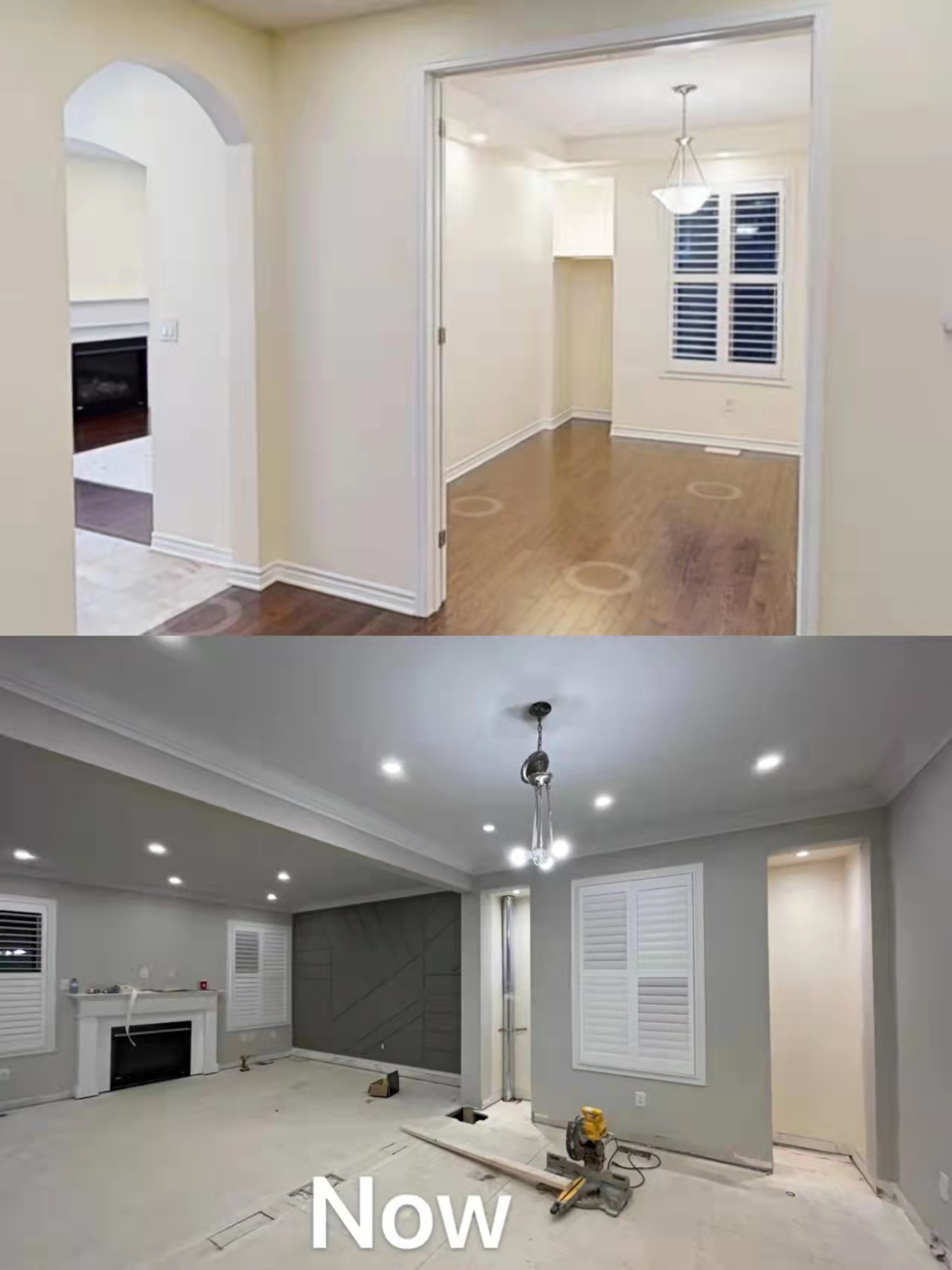
Step of removing bearing wall and make it open-concept
Step of removing bearing wall and make it open-concept
So, you’re looking to open up your cramped kitchen and are worried about the process and structural aspects of the project. Well, if you’re feeling stuck in so many walls, you’re not alone. Many homeowners are aspiring for the open floor concept, and that’s why the concept of open living is trending. With an open concept, you’re not confined to niche rooms – like a room as a kitchen, dining room for eating, and living room for formal entertaining.
Homes with open floor plans are high in demand, and that’s where you’re left wondering how to get modern floor plans, as you see in some magazines and on HGTV.
So, here’re some ins and outs of planning and implementation of open-concept remodel:
The role of bearing wall in a house
In the framing of a home, there’re can be two types of wall, i.e., load-bearing and non-load bearing or partition walls. As the name suggests, the bearing wall takes a load of floors and roof above in addition to its weight and conducts it to a foundation structure below it. It’s an active structural element of a building. If you’re looking to open a ranch-style home by removing a wall or two, it’s essential to have a visual inspection of a structural engineer to know if that is a load-bearing wall or otherwise.
You can take down any wall, but there’re a lot of factors that affect the difficulty and cost of the job— you need to evaluate the loading condition and provide alternate support (maybe a post or a beam) to take the loading off.
If your floor joists are spliced over the wall or at the end, the chances are that the wall is bearing. You can inspect the wall from the attic, and stacked walls are mostly load-bearing. In some cases, it is not easy to tell for sure whether the wall is bearing. For such, hire a contractor or structural engineer to help you figure it out.
It’s also critical to check what’s in the wall. For the wall taking up pipes, ducts, wiring, plumbing, and heat ducts can present a much more significant obstacle. Sometimes just because of these lines, removing a wall isn’t practical.
The role of flush beam
The most common method used for replacing a bearing wall is by supporting the framing structure by adding a beam under the ceiling. Most contractors use this method because they don’t have to cut into the joists or other framing members above the beam. However, you need to support the ends of the beam with the posts that carry the load to the foundation.
If you want a neat and professional look with a ceiling that’s uninterrupted by a beam, the flush beam is the way to go. The contractor hides the beam by recessing it in the ceiling in this process. However, this procedure needs more work because you have to cut a patch through the joists and another framing member for the beam.
But along with the beam, the end posts must rest directly on the foundation or footing to support the load, and the footing will go on a basement floor.
How to replace - a metal beam or LVL beam?
As you’ve taken out support off the roof, using high-quality support supporting beam is essential. Depending on the situation, you can use solid lumber or sandwich two or more pieces together along with a layer of 1/3 inch plywood in the middle.
Anyhow, the best and recommended one is the LVL beam. Laminated Veneer Lumber (LVL) packs greater strength into a smaller space than similar sized dimensional lumber. So, a 4x6 LVL will be way too stronger than a 4x6 lumber. If you’re worried about the cost, Non-architectural LVL is quite affordable.
What is the essential part of this project?
To remove a load-bearing wall, it is essential to hire an experienced contractor who can take care of all the structural work for you. Modifying the existing structural condition is a pesky task, and it is best to hire professional help.
Here’re some of the critical factors you need to consider for the safety of this project:
- It is essential to have safe temporary supports before getting rid of any part of the existing wall. In most cases, temporary support walls are provided on both sides. Professionals call these temporary supports shoring. It is an integral part of the project, and there should be no compromise on it.
- The next important step is to know the proper sizing of the replacing beam. The size of the beam depends on the deflection, shear, deadweight, live weight, and roof loading. So, sizing the beam is not a job for an amateur. Even if you have span tables, it’s best to leave it to a structural engineer who can assess the loads and help you design the beam.
- Now that the size has been decided, you need to look for a way to support the ends of a new beam. You can place the new beam on the load-bearing wall or transfer that to a new post. But for the latter case, you need to have a new foundation.
- Removing a wall also needs HVAC and electrical line rework. So, make sure you check what’s in the wall and have an alternate plan to avoid compromising the comfort.
Benefits of hiring a professional contractor
If you hire a professional contractor, they can take care of the project, from removing the old wall to giving the finishing touches. The structural engineers can assess and evaluate all the loading conditions and alternate design arrangements.
They utilize modern softwares to design beams that fully comply with modern structural codes. They’ll run the beam through various loading combinations to ensure the new support frame satisfies all the structural and serviceability requirements. The design of foundation work is also a part of the above scope if the engineer doesn’t find any alternate solution.
